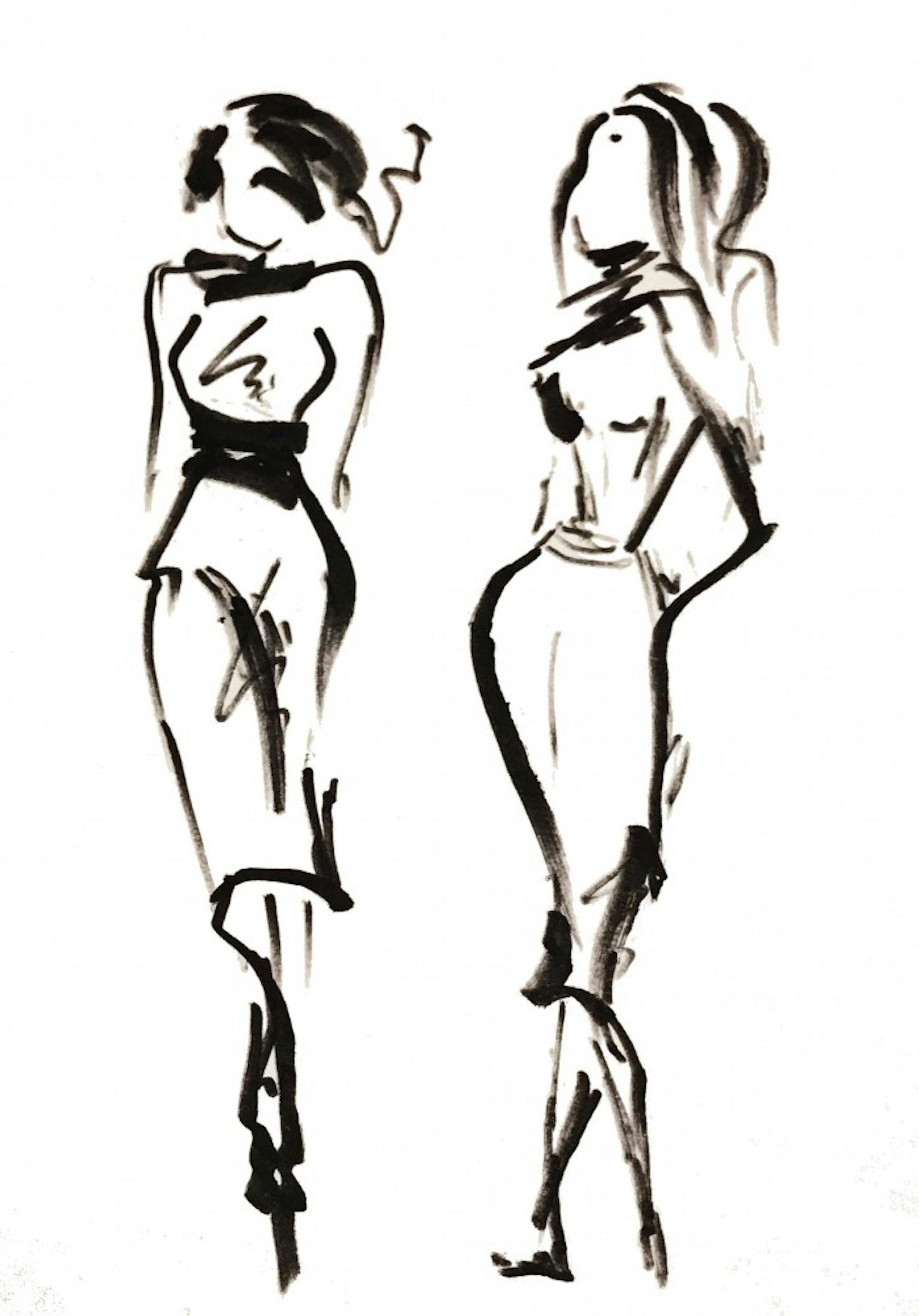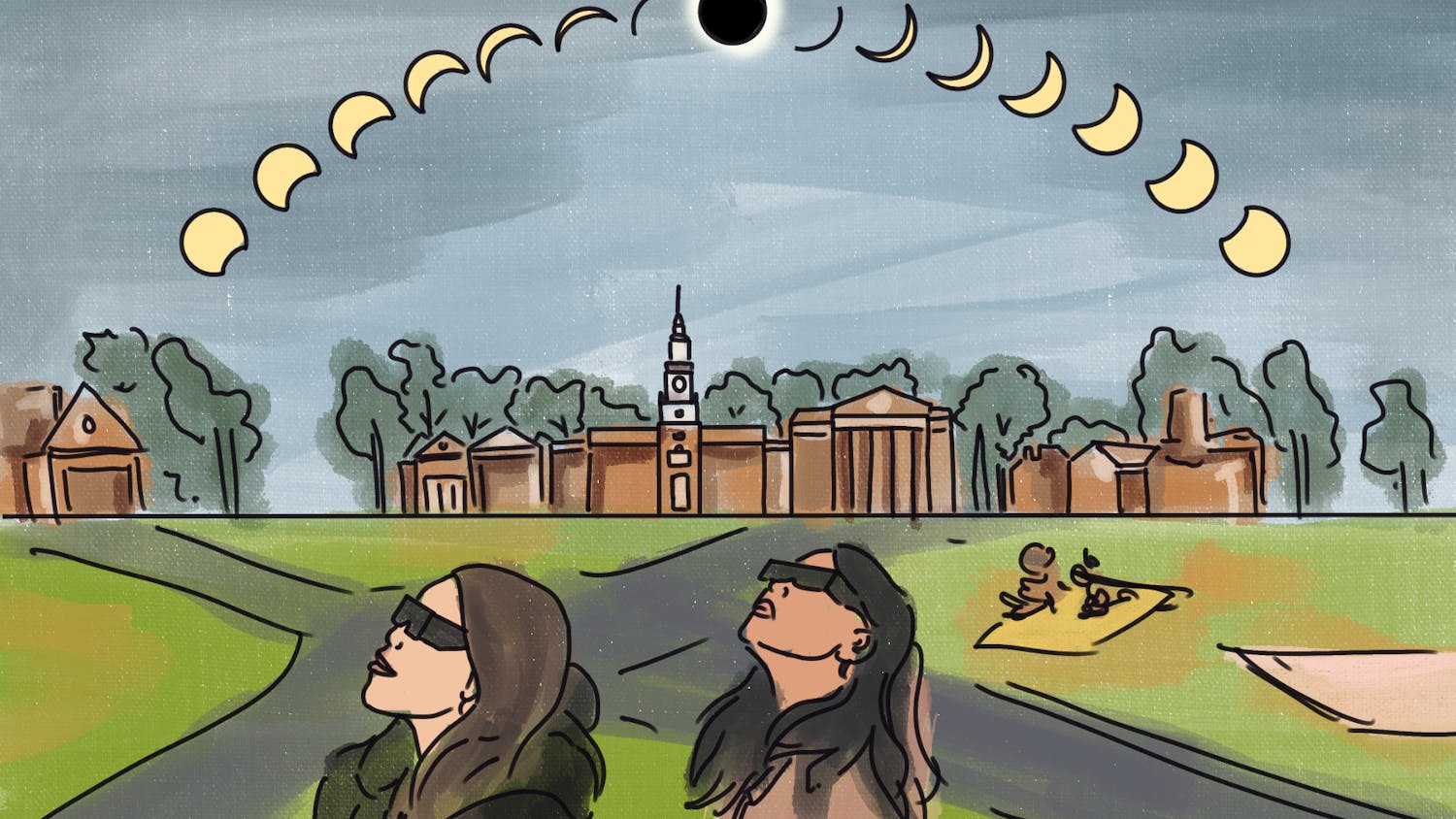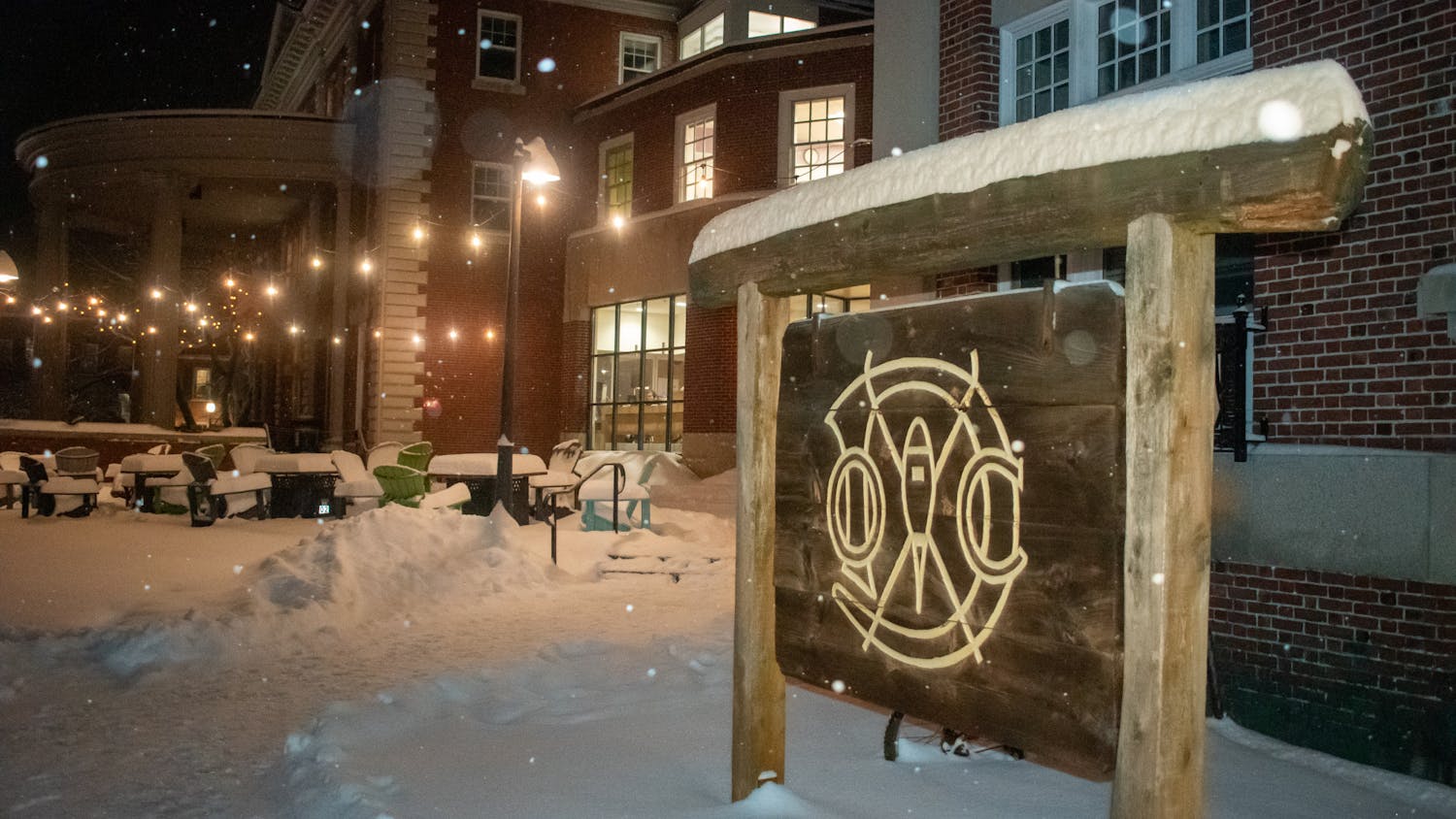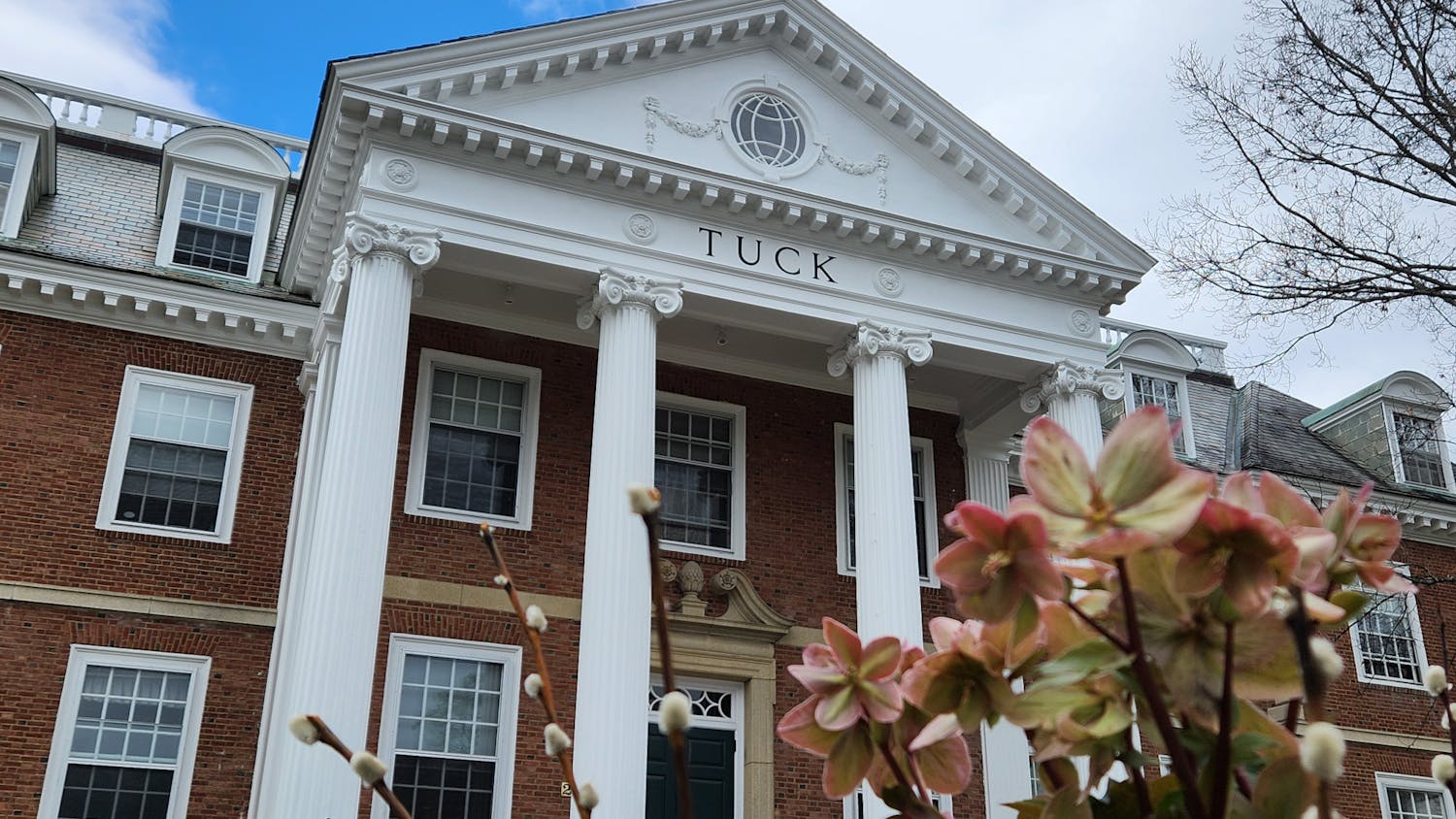I first heard about Comparative Literature 42.01, “Prada, Chanel, Ferrari: History and Literature” during the tail end of this past fall term. Long enough into the term that I’d begun to feel that itch: the one that you feel when you have just finished midterms and major projects, but have yet to begin finals. The calm before the storm, a lull right before things get crazy, prompts me to start looking at the course timetable for next term. Fantasizing about classes that I didn’t currently have to worry about, the escapism trickled into conversations with friends. Soon, our mumbled grievances during rushed meals turned into almost giddy, romanticized exploration of courses we didn’t have to do work for yet. Somewhere along the way, appearing almost out of nowhere, the mythos of “Prada” was created, and it was felt everywhere on campus. As soon as course selection period began, the class filled up instantaneously, perhaps based on the assumption that it was graded entirely on attendance and four pop quizzes. The class limit was increased from 30 to 60, then again to 200. On the first day of winter term, not accounting for unregistered attendees hoping to get off the waitlist, the class numbered somewhere around 230 people.
As a current student in “Prada,” I wanted to dissect the mystery that this class presents. Why did people become so infatuated with it before the previous term had even ended? To answer this question and more, I spoke to comparative literature professor Graziella Parati, the woman behind the curtain. A graduate of Università Statale di Milano, Italy and recipient of a Master of Arts degree from the University of Washington and a Ph. D. from Northwestern University, Parati has the knowledge that transcends boundaries of a single discipline.
This course has garnered enormous attention at Dartmouth. Do you think there is a reason for that?
GP: I am very surprised about that. I don’t know whether it is the title or if it is really the content of the class. I am actually glad it has gained so much attention. There are a few classes on campus which are really big. One is a class on Game of Thrones and some of Randall Balmer’s classes — I think he’s teaching one on revolution right now. I’m happy, I’m absolutely happy. I’m also very happy that there are so many men in the class. I’m interested in seeing these aesthetic concerns that are also among men and not only women. Because that’s what I thought, I thought I would have 80 percent women and 20 percent men, but that’s not the case. There are many more than I thought there would be.
Have you taught this course in the past?
GP: This is the second time I’ve taught it. The first time I had something like 130 students, something like that. This is so much bigger. It’s almost twice as big as the first time. We’ll see how it evolves, and also how the content evolves, because every time I need to change what is in the class.
Did you feel like you had to change, due to the size of the class, the material or the way in which the material was presented?
I changed, in particular, the content and looking at more case studies. In fact, this time we’re looking at Latino fashion and Muslim fashion. Last time we went on for longer, working on the theoretical side, theoretical approaches to the material. And so we only did, last time, Muslim fashion. So I’ll probably go in that direction, in revising it for the next time. I’d like to have a section on hair, which I think may appeal to a lot of people because it’s connected to political and social issues.
Is knowing the history of fashion necessary in understanding contemporary fashion?
GP: Absolutely, absolutely. Fashion is not something that gets created one morning. It carries upon itself traditions that come before and that can resurface. I like to look at the past to show the conjunction between aesthetics, history and social issues. It is a lot easier to start with looking at what is done, what is in the past, and then look at what is happening today. We will still work on the social issues and fashion in a few weeks when we bring it to the 20th century.
Because the terms are so short, is there anything that you weren’t able to bring into this course that you wish you could have?
GP: Yes. What would be ideal is to have, first of all, a very accurate historical approach to fashion, and then devote a large amount of time to the 20th century. Everything has to be compressed somehow. The historical part is shrunk, the case study part is shrunk, it’s difficult. It’s difficult to go into depth in a subject with only nine weeks.
You’ve done work surrounding Italian migration. Do you feel that social and political change often folds into fashion?
GP: Well, in a different way. Certainly, in a different way. Also, because when I work on migration, I work on what is happening right now in the Mediterranean. If we approach the course on fashion, it is devoted to a much larger period of time. But it is certainly very interesting that working on migration will develop from some kind of research on autobiography that I was doing 25 years ago. And an interest in fashion has developed from an interest in material culture and its history. What I like is to see how interest that develops as sort of an aside to my academic work then gets folded into what I do on campus and what I do in my research.
What made you decide to teach a fashion course?
GP: Well, I’ve always been interested in the aesthetics of everyday life. I’ve always asked myself particular questions that also relate to what students wear in one campus and wear in another campus. So when I came to Dartmouth, all of my students would come to class with the Dartmouth sweatshirt, and I thought that was a peculiar choice. I was coming from Northwestern, where none of the students would show up to class with the college’s sweatshirt. So there are questions about choices in everyday life that were really interesting to me, and how they impacted the relationships between people on campus. It started out with very, very simple questions, and then it developed into an interest that is pretty much global.
Is there a particular reason you decided to come to snowy Hanover?
GP: They offered me a job. That was a good thing. I was very lucky in my career because I was still writing my dissertation when Dartmouth made me a job offer. I have been here for a very long period of time because Dartmouth is a very good place to be as a researcher. Nothing is in the way of exploring in all directions, wherever you want to go. I started out as somebody who worked on gender issues and autobiography. I am now working on migration studies, and I moved into a field that concerns the humanities, sociology and geography. It’s wonderful to have the utmost freedom in the research choices that one makes. And I’ve had offers, but either they came at the wrong time or they were not the right ones. And I’m still here. I’ve been here for 28 years, which is a very, very long time.
If you were to create a class, a passion project, aside from fashion, what would it be?
GP: It’s an interesting question. I do teach courses on topics I’m very passionate about. Fascism, for example. I think this is a good time to keep a conversation about fascism going and really knowing where the roots of the movement were. I pretty much teach courses I really want to teach. What would I teach? Well, I would teach more courses on migration issues, for sure, because I feel the urgency of bringing this conversation to every student. I am getting more and more involved with art. It would be great to teach a course that deals with the everyday use of art. But I’m not in art history and I’m not in studio art, so I wonder how I could package it so I wouldn’t invade other people’s territory.
Is there anything else you’d like to mention?
GP: It is a total pleasure to teach this class. It’s exciting to see how many students are interested in it. But also a personal investment I have in it, it is quite rewarding, I think.
This interview has been edited and condensed for clarity and length.




